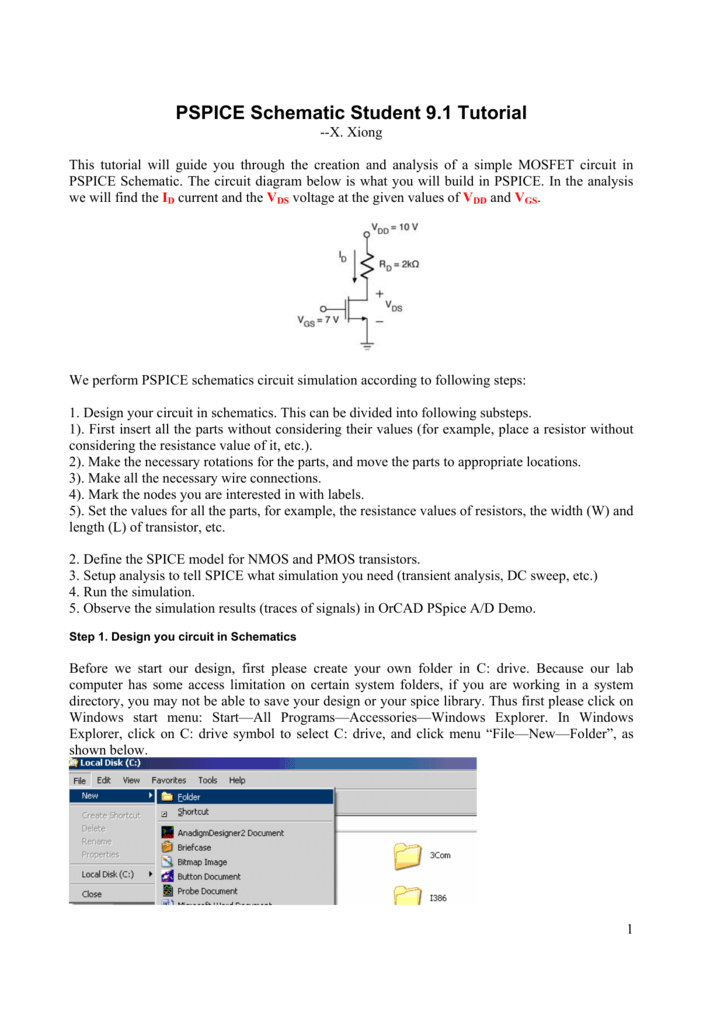

At the same time, diode D2 conducts via D1 charging up capacitor, C2.ĭuring the positive half cycle, diode D1 is reverse biased blocking the discharging of C1 while diode D2 is forward biased charging up capacitor C2.
#Drawing an ammeter in pspice schematics series
Because there is no return path for capacitor C1 to discharge into, it remains fully charged acting as a storage device in series with the voltage supply. During the negative half cycle of the sinusoidal input waveform, diode D1 is forward biased and conducts charging up the pump capacitor, C1 to the peak value of the input voltage, ( Vp). The circuit shows a half wave voltage doubler. In other words, double the peak voltage value because the diodes and the capacitors work together to effectively double the voltage. This simple diode-capacitor pump circuit gives a DC output voltage equal to the peak-to-peak value of the sinusoidal input. The circuit consists of only two diodes, two capacitors and an oscillating AC input voltage (a PWM waveform could also be used).

The Voltage DoublerĪs its name suggests, a Voltage Doubler is a voltage multiplier circuit which has a voltage multiplication factor of two. However, if designed correctly around a suitable transformer, voltage multiplier circuits are capable of producing output voltages in the range of a few hundred to tens’s of thousand’s of volts, depending upon their original input voltage value but all with low currents in the milliamperes range.

The voltage produced by a voltage multiplier circuit is in theory unlimited, but due to their relatively poor voltage regulation and low current capability there are generally designed to increase the voltage by a factor less than ten. The output voltage 2V IN is taken across the two series connected capacitors. When the sinusoidal input voltage is positive, capacitor C 1 charges up through diode D 1 and when the sinusoidal voltage is negative, capacitor C 2 charges up through diode, D 2.
#Drawing an ammeter in pspice schematics full
This type of voltage multiplier configuration is known as a Full Wave Series Multiplier because one of the diodes is conducting in each half cycle, the same as for a full wave rectifier circuit. By adding a second diode and capacitor to the output of a standard half-wave rectifier, we can increase its output voltage by a set amount.

The above circuit shows a basic symmetrical voltage multiplier circuit made up from two half-wave rectifier circuits. Consider the basic voltage multiplier circuit below. But by using combinations of rectifier diodes and capacitors together we can effectively multiply this input peak voltage to give a DC output equal to some odd or even multiple of the peak voltage value of the AC input voltage. Generally, the DC output voltage ( Vdc) of a rectifier circuit is limited by the peak value of its sinusoidal input voltage. Voltage multipliers are similar in many ways to rectifiers in that they convert AC-to-DC voltages for use in many electrical and electronic circuit applications such as in microwave ovens, strong electric field coils for cathode-ray tubes, electrostatic and high voltage test equipment, etc, where it is necessary to have a very high DC voltage generated from a relatively low AC supply. One alternative approach is to use a diode voltage multiplier circuit which increases or “steps-up” the voltage without the use of a transformer. The Voltage Multiplier, however, is a special type of diode rectifier circuit which can potentially produce an output voltage many times greater than of the applied input voltage.Īlthough it is usual in electronic circuits to use a voltage transformer to increase a voltage, sometimes a suitable step-up transformer or a specially insulated transformer required for high voltage applications may not always be available. In the tutorial about Rectifiers, we saw that the DC output voltage being controlled by the rectifier is at a value below that of the mains input voltage.


 0 kommentar(er)
0 kommentar(er)
